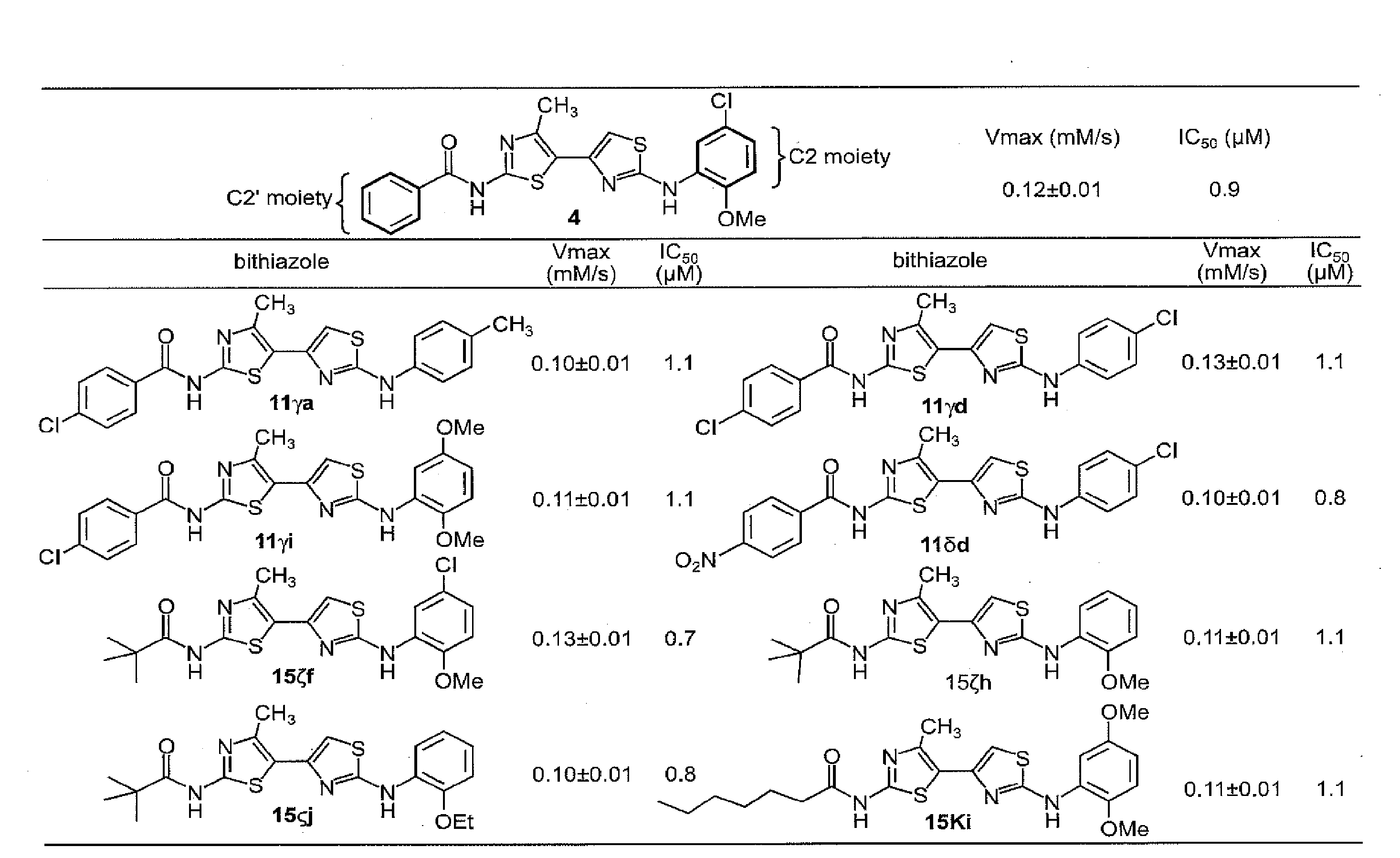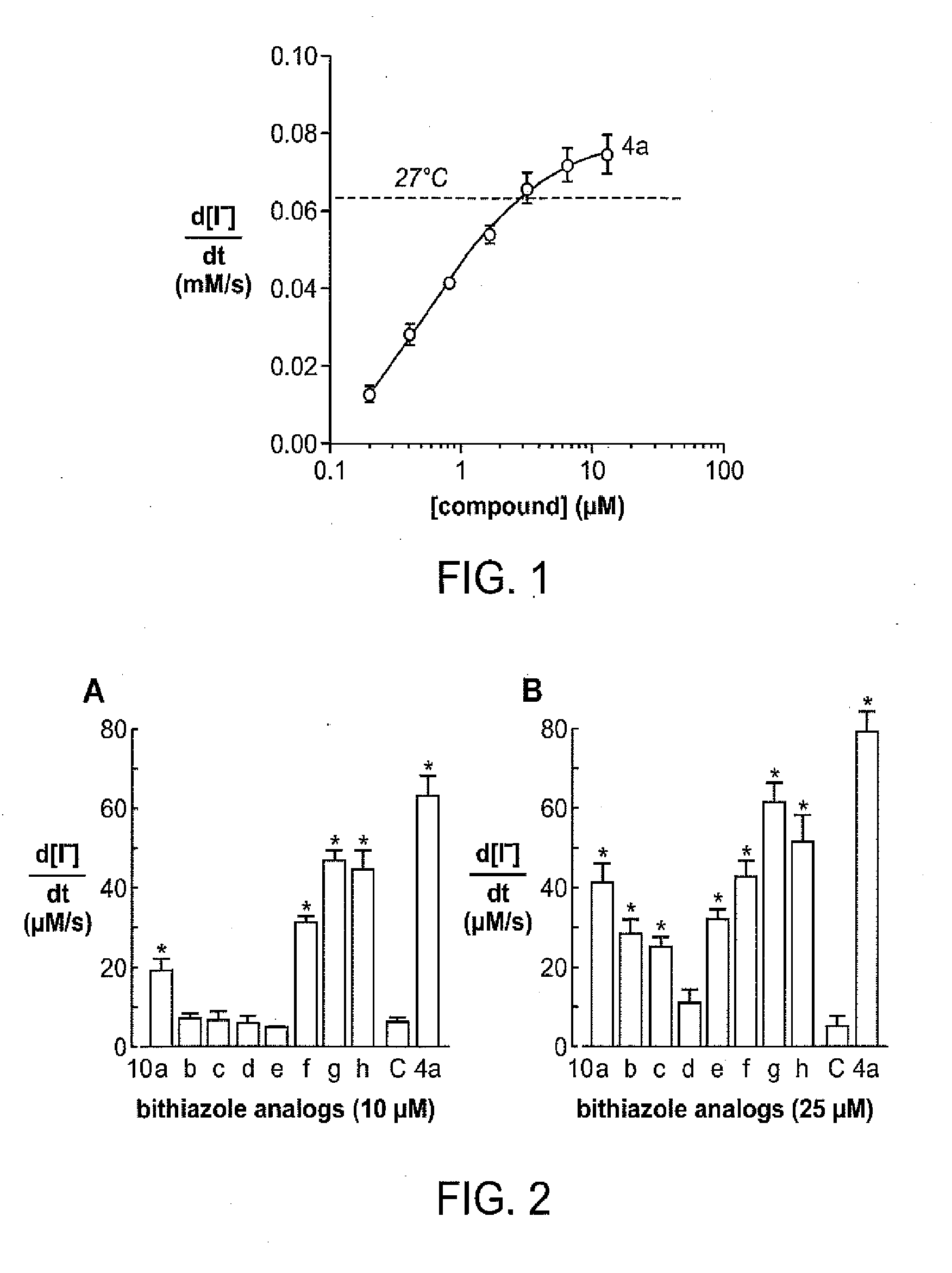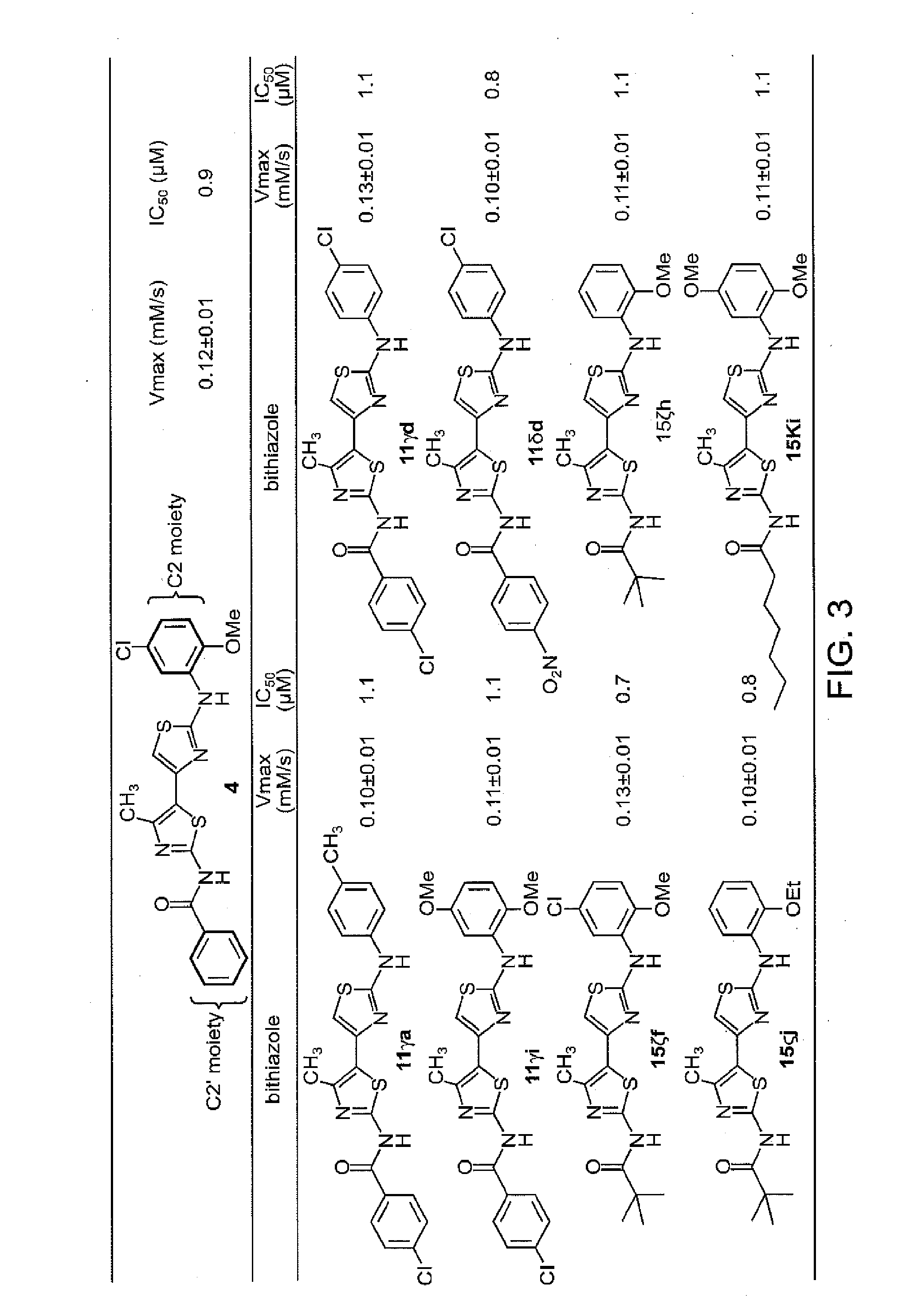Compounds Having Activity in Correcting Mutant-CFTR Processing and Uses Thereof
a conductance regulator and mutant technology, applied in the field of corrector compounds and methods for correcting cellular processing of mutant cystic fibrosis transmembrane conductance regulator proteins, can solve the problems of not offering clinically useful therapies, and progressive disability and early death, so as to improve drug like properties, increase potency and solubility, and broaden the effect of diversity
- Summary
- Abstract
- Description
- Claims
- Application Information
AI Technical Summary
Benefits of technology
Problems solved by technology
Method used
Image
Examples
example 1
General Materials and Methods
[0310]Biological Assays The compounds are tested for biological activity by various methods. Dose-response assays measuring I− influx are performed on ΔF508-CFTR transfected Fischer rat thyroid (FRT) epithelial cells. Other cell lines are the “class III” gating defective CFTR mutants G551D-CFTR and G1349D-CFTR, which are potentiator specific variants (Gregory et al., MCB 11: 3886-3893 (1991). These mutations affect the glycine residues in NBDI and NBD2 that are highly conserved in ATP-binding cassette proteins (Hyde et al., 1990; Logan et al., 1994). The gating defective mutant G551D-CFTR represents the most common gating defect causing cystic fibrosis. Other assays include patch-clamp analysis to assess electrophysiological mechanism of ΔF508-CFTR activation, and transepithelial current measurements to confirm activation of ΔF508-CFTR CF currents. Primary cultures are used to assess activity of the compounds in a native lung airway system, such as nasal...
example 2
Synthesis of Corrector 4 (Control)
[0321]An efficient route for the synthesis bithiazole analogs was developed as follows. Efforts began with a synthesis of N-(2-(5-chloro-2-methoxyphenylamino)-4′-methyl-4,5′-bithiazol-2′-yl)benzamide—the putative structure of “Corr-4” corrector 4. This work commenced by treating 3-chloropentane-2,4-dione with thiourea under reflux in absolute ethanol. 5-Acetyl-2-amino-4-methylthiazole (5) was obtained in 90% yield. Surprisingly, attempts to aminoacylate the 2-amino moiety in 5 with benzoyl chloride under various base, solvent and temperature conditions failed to deliver the desired intermediate N-(5-acetyl-4-methyl-thiazol-2-yl)-benzamide (6).
[0322]It was determined that the poor yield of 5→6 was a consequence of the 5-acetyl moiety reducing the nucleophilicity of the 2-amino group of 5. Since the plan was to diversify with a spectrum of acid chlorides, this problematic reaction led to evaluation of the inverse of these two reactions—i.e., use bezoy...
example 3
Analysis of ΔF508-CFTR Corrector Activity for Corrector 4
[0323]Compound 4 from Example 2 was tested for ΔF508-CFTR corrector activity as follows. The dose-response data for corrector 4 is shown in FIG. 1 where the dashed line indicates the level of activity with low-temperature (27° C.) rescue which is used as a positive control. Activation of ΔF508-CFTR was confirmed for each of the compounds by showing no activity on nontransfected FRT cells and near-complete inhibition of the increased influx by the thiazolidinone CFTRinh-172 at 10 μM as previously described (Ma et al., J. Clin. Investig. (2002) 110:1651-1658) (data not shown).
PUM
| Property | Measurement | Unit |
|---|---|---|
| temperature | aaaaa | aaaaa |
| w/w | aaaaa | aaaaa |
| median diameter | aaaaa | aaaaa |
Abstract
Description
Claims
Application Information
 Login to View More
Login to View More - R&D
- Intellectual Property
- Life Sciences
- Materials
- Tech Scout
- Unparalleled Data Quality
- Higher Quality Content
- 60% Fewer Hallucinations
Browse by: Latest US Patents, China's latest patents, Technical Efficacy Thesaurus, Application Domain, Technology Topic, Popular Technical Reports.
© 2025 PatSnap. All rights reserved.Legal|Privacy policy|Modern Slavery Act Transparency Statement|Sitemap|About US| Contact US: help@patsnap.com



